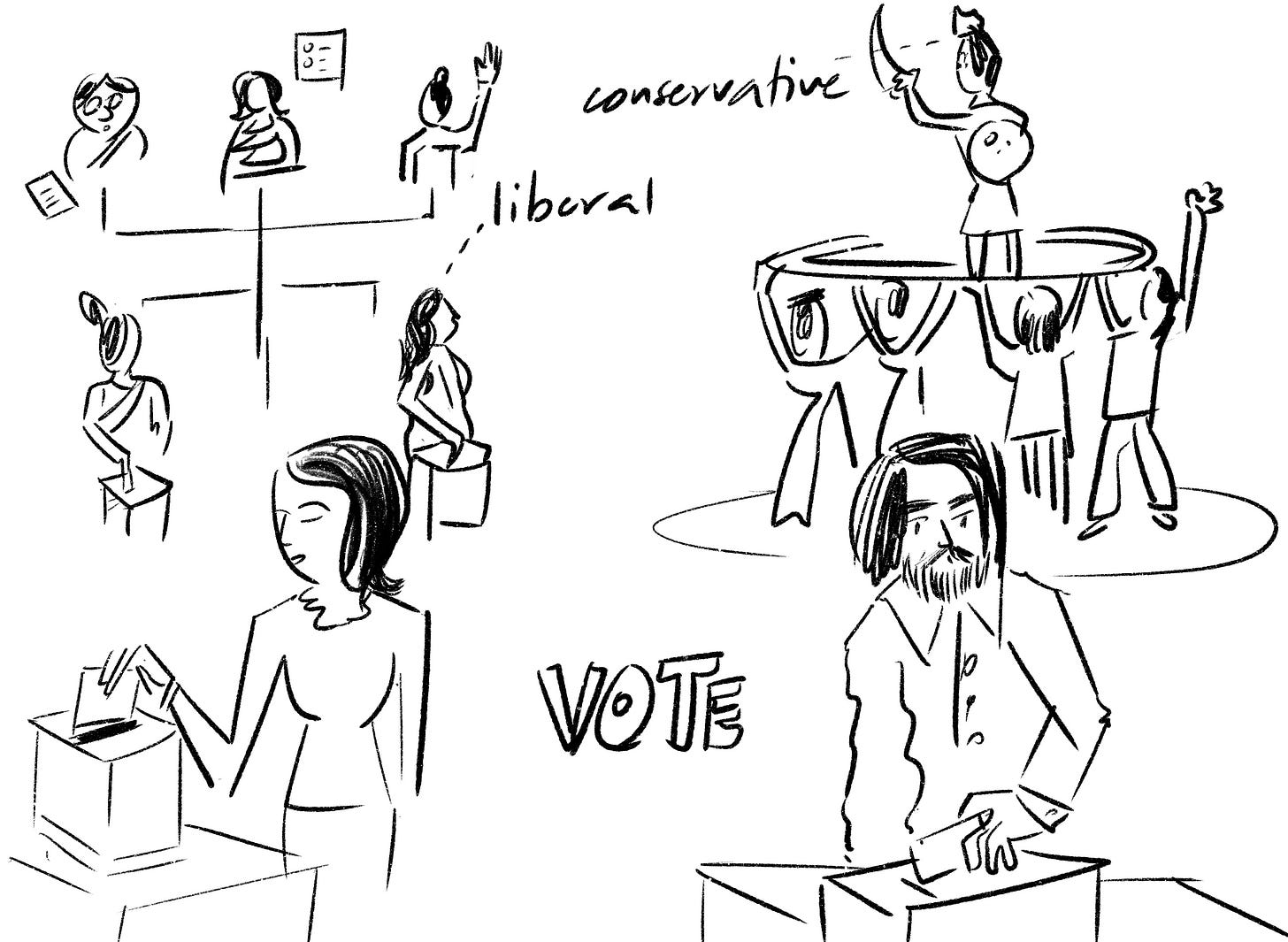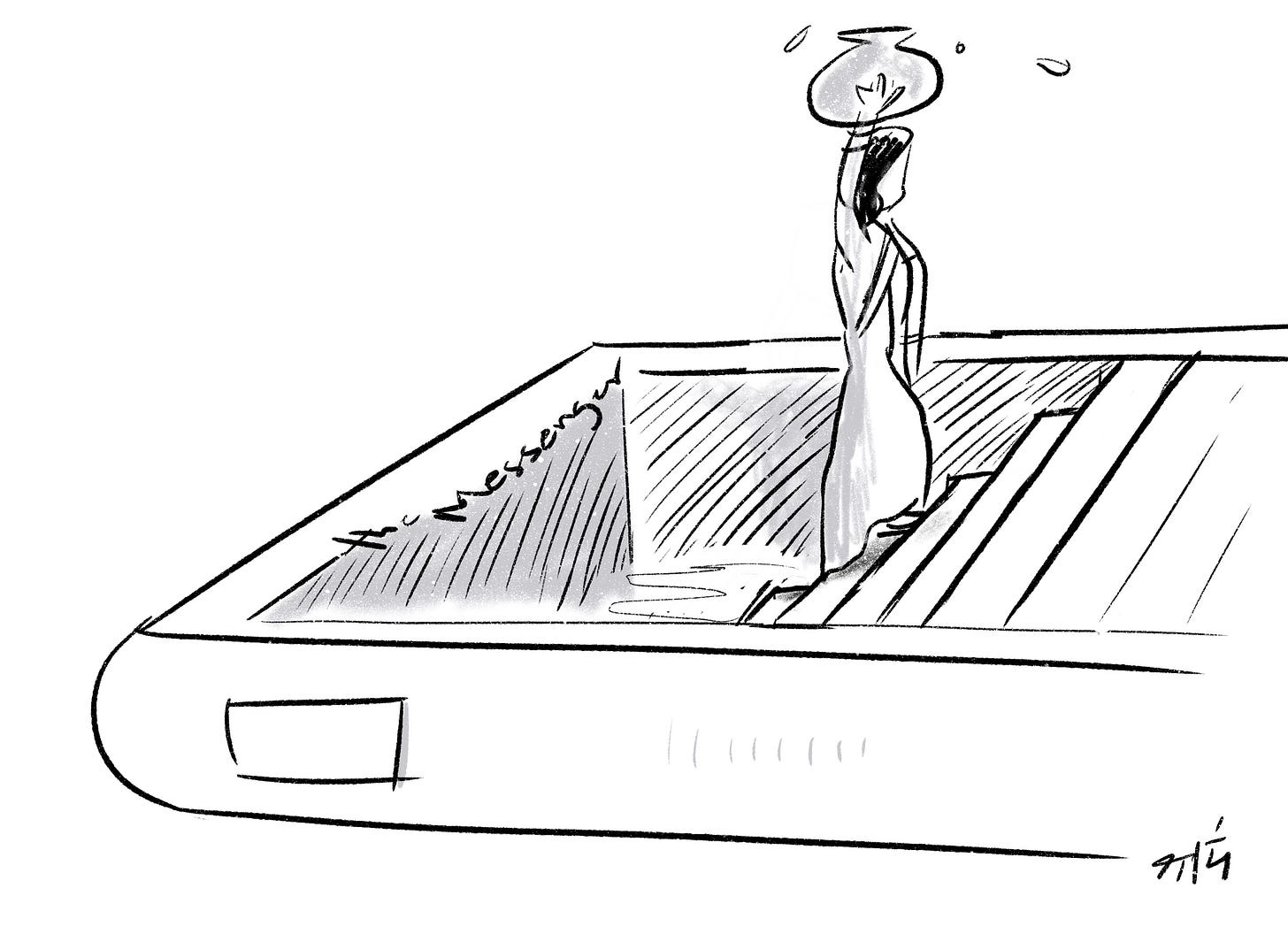Thinking in Public: The Case for Gender, Part 1
This article is the first in a series on using data driven case-making to get a grasp on Gender in the Indian context. The series builds upon a series on heat we wrote last year.
From Polycrisis to Polyconflict
A term that outgrew its promise
The French thinker Edgar Morin coined polycrisis in Homeland Earth (1993) to capture how economic, ecological and social factors interact in unpredictable "system shocks." The historian Adam Tooze popularised the word after 2020, and the World Economic Forum echoed it in Davos 2023 as a catch‑all for converging risks. While the concept highlighted the interconnections between these three factors, it retained the technocratic hope that crises are acute disruptions that smart management can resolve.
Three limits of crisis thinking
Structural permanence – Climate feedbacks, biodiversity collapse and financial fragility are not passing storms; they are the new weather of world affairs.
Institutional insufficiency – The frameworks meant to contain risk, from the Paris Agreement to Basel banking rules, can as easily amplify risk.
False mastery – Calling everything a "crisis" flatters the belief that a steady‑state normal awaits on the other side of expert intervention.
Polyconflict: Beyond Crisis, a definition
Polyconflict treats today's turbulence as a lattice of enduring power struggles over resources, legitimacy and meaning. Conflicts do not end; they mutate. Governance therefore shifts from restoring stability to navigating permanent contention. In this landscape, gender emerges as both a dimension and driver of conflict. The widening gap between the desires and aspirations of men and women manifests in divergent political alignments, creating parallel realities within shared societies. As climate change intensifies resource scarcity and technology reshapes power dynamics, gender is an important factor in determining who defines problems and who legitimately offers solutions.
What follows is a brief overview of changing ‘gender + politics’ dynamics in the developed world.
Gendered Reality
Elections expose a yawning gender split among the under‑35s. In Germany's 2025 federal vote, young men flocked to the far‑right AfD while young women swung hard for Die Linke, leaving the centre hollowed out. In South Korea's 2024 legislative race, support for the main conservative bloc was 30 points higher among men in their 20s than among women the same age. The United States shows an analogous chasm: in 2024 polling, young women backed the Democrats by over twenty points while young men leaned Republican.
Two realities, one polity
The result is more than just a "gender gap"; we live with parallel political cosmologies. Feminist scholars note that higher gender equality correlates with lower interstate violence; yet men's resistance to that equality is itself fuelling new conflict lines. Electoral systems now confront bimodal publics whose priorities rarely overlap.
Interlocking Polyconflicts: Gender, Climate, Technology
Climate × Gender
UN research shows women are more likely to depend on subsistence agriculture and informal ecosystems, making them disproportionately vulnerable to droughts and floods. When displacement hits, patriarchal norms can intensify violence and exploitation, deepening gender conflict even as it intersects with resource wars.
Tech × Gender
The digital gender divide limits women's voice in algorithm design and data standards, embedding bias in everything from facial recognition to hiring software. Conversely, misogynist networks weaponise anonymity and deepfakes, turning the internet into a theatre of asymmetric harassment that spills offline.
Gender as the Third Rail
Polyconflict clarifies that the twenty‑first century's decisive battles will not end in neat peace treaties or technocratic fixes. They will be lived through, iterated, and reshaped by overlapping contests—most visibly over climate stability, technological sovereignty, and the meaning of gender itself.
Climate sets humanity's physical boundaries; technology rewires our capacities; gender governs how we inhabit those constraints and possibilities. When half the population's expanding agency collides with entrenched hierarchies, the resulting friction radiates through every other arena of power. Because gender orders intimacy, reproduction, labour and representation, it carries unmatched leverage over social cohesion. In short:
Climate constrains what is materially possible.
Technology determines what is technically imaginable.
Gender influences who counts as a legitimate author—and beneficiary—of that future.
Ignoring the gender dimension not only misreads electoral maps; it blinds strategy to a fault‑line already cracking institutions. Embracing a polyconflict mindset means planning for a world where gender politics are not a culture‑war side‑show but a core theatre of global stability or breakdown. As the next generation of voters builds incompatible realities in the same states, bridging that divide may prove as urgent as decarbonising the grid or governing artificial intelligence.
While the preceding analysis is truer of electorates in the developed world, it establishes the framework through which we can examine India's own gender polyconflict. India faces a related but different set of gender politics which we will explore using our case-making methodology.
Case-Making: A Method for Polyconflict Analysis
Why Traditional Knowledge Pipelines Falter
The classic research‑to‑policy cycle—grant, study, peer review, policy brief, implementation—can take three to five years, yielding perhaps two intervention windows per decade. That is glacial when addressing polyconflicts, where decisive action must occur rapidly. Moreover, wicked problems—so named by planners Horst Rittel and Melvin Webber—lack clear edges, stable data or single correct answers.
Result: by the time a peer-reviewed paper emerges, the conflict has already morphed.
What is a "case"?
Borrowing from law, design and data science, a case is a structured argument that couples evidence with proposed action:
Contextual – Tailored to the differing needs of, say, a climate scientist and a daily‑wage earner.
Actionable – Timelines measured in weeks, not years; recommendations testable in the field.
Adaptive – Able to ingest new data or actors without losing coherence.
Robust – Survives hand‑offs from researcher to advocate to decision‑maker with minimal signal loss.
This approach is particularly valuable for gender polyconflicts, where evidence must be translated into action across diverse stakeholders, from policymakers to grassroots organizations. Trade‑offs are inevitable, but explicit design lets us manage them rather than stumble blindly.
Why case‑making beats linear pipelines
Traditional scholarship prizes high confidence; polyconflict often demands high consequence reasoning. If there is even a 1% chance of an existential asteroid strike, humanity would mobilise—precision in the third decimal place is secondary. Case‑making formalises that urgency while keeping evidence transparent.
Applying the Polyconflict Lens: The Case of Gender in India
The interaction between gender and politics in India reveals a different manifestation of polyconflict from what we observe in the West or in East Asia; while we don't see the same stark divergence in electoral preferences by gender, the intersection of demographic shifts and political representation creates its own distinctive tensions in the country.
To understand India's gender polyconflict, we must first examine a dramatic demographic transition: the evolution of the Total Fertility Rate (TFR) over the last two decades. Two decades ago India was still a high‑fertility country: NFHS‑3 (2005‑06) put the national total fertility rate (TFR) at 2.7 births per woman and showed only ten states— all in the south or far west—at or below the replacement threshold of 2.1. Today that map has flipped. NFHS‑5 (2019‑21) records a national TFR of 2.0—below replacement—and finds just five states still above it: Bihar 2.98, Meghalaya 2.91, Uttar Pradesh 2.35, Jharkhand 2.26 and Manipur 2.17. In other words, 25 of 28 states and most Union Territories have already completed the fertility transition.
The scale of the decline is striking. At the turn of the century women in India could expect, on average, to bear about 3.2 children; by 2021 that figure had fallen by more than a full child. Much of the absolute drop occurred in the historically high‑fertility Hindi‑belt: Uttar Pradesh shed 1.4 births per woman in twenty years, and Bihar one full birth, thanks to later marriages, rising girls' schooling, and a doubling of modern‑contraceptive use since 2005. The South and west, meanwhile, have stabilised at European‑style levels—Kerala edged up slightly to 1.8, but Karnataka, Tamil Nadu and Maharashtra hover around 1.6.
This fertility decline suggests a shift in gender relations (we can’t say with certainty if it’s a cause or effect or correlation) but it is suggestive of increased women's autonomy in reproductive decisions. While developed nations experiencing similar transitions have seen widening gender-based political divides, India's manifestation of gender polyconflict takes other forms: here we illustrate that divide via an impending constitutional crisis over political representation.The shifting fertility map now collides with a constitutional challenge: India's next nationwide delimitation of parliamentary and assembly constituencies, scheduled once the freeze enacted by the 42nd and extended by the 84th Constitutional Amendments expires after the first census is taken post‑2026. For nearly five decades every state's Lok Sabha quota has been locked to its 1971 population, a compromise meant to shield low‑fertility regions from losing influence while the high‑fertility Hindi belt caught up. The Delimitation Commission of 2002 redrew boundaries within states but could not alter the inter‑state tally of 543 seats.
During the same half‑century, total fertility rates diverged dramatically. Southern and western states that now average 1.6–1.8 births per woman have seen their population share slide from about 24 percent in 1971 to under 20 percent in 2023, while Uttar Pradesh, Bihar and Rajasthan—still above‑replacement at 2.3–3.0—have expanded their combined weight. One recent projection suggests that, if seats are reallocated strictly by population, the South's representation could fall to 19 percent while the north‑central belt could command close to 60 percent of the Lok Sabha.
That prospect has already sparked political tremors. The Chief ministers of Tamil Nadu and Telangana argue that delimitation would "penalise success" by rewarding states that failed to curb fertility. Opposition parties have demanded either another moratorium or a formula that blends population with indicators such as human‑development outcomes and tax effort. Northern leaders, for their part, frame the exercise as long‑overdue electoral equality, noting that an average MP in Uttar Pradesh today represents almost a million more constituents than an MP in Kerala.
This looming redistribution of political power represents a quintessential polyconflict—a permanent struggle over resources and legitimacy rather than a temporary crisis. States with lower fertility rates face diminished political influence, while regions with higher rates may gain power. The delimitation challenge thus becomes a proxy battle over competing visions of gender relations and development. What is clear is that demography and democracy are increasingly inseparable. India managed to bring down fertility without coercion, but the political dividends of that achievement are unevenly distributed. Delimitation is poised to become a consequential act in the unfolding story of India's demographic transition.
The Indian case illustrates how gender polyconflicts manifest differently across contexts. While Western democracies face divides in voting patterns, India confronts a structural tension between regions with different gender norms, fertility patterns, and development paths—all converging on questions of political representation and power.
Conclusion: Gender Polyconflict and the Case-Making Imperative
This essay has introduced a paradigm shift: from treating our interconnected challenges as a temporary "polycrisis" to recognizing them as an enduring "polyconflict"—a lattice of power struggles that will not disappear but must be navigated. Gender emerges as a critical dimension of this polyconflict, manifesting differently across global contexts but consistently revealing how power is distributed, contested, and reimagined.
In developed democracies, we observe gender driving unprecedented political polarization—with young men and women increasingly inhabiting divergent ideological worlds despite sharing physical space and institutions. In India, the manifestation differs dramatically: states that have achieved gender progress (reflected in education and lower fertility rates) now face potential dilution of their political voice relative to regions where patriarchal structures remain stronger. These contrasting cases illuminate how gender is not merely a peripheral "social issue" but a fundamental axis around which political power, economic resources, and institutional legitimacy are contested in the global polyconflict.









